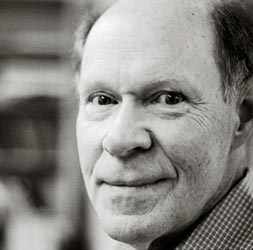
Robert Woodrow Wilson shared half of the 1978 physics prize with Arno Penzias, his colleague at Bell Laboratories in New Jersey, for their discovery of cosmic microwave background radiation that originated in the early big bang and permeates the universe. The other half was awarded to the Russian Pyotr Kapitsa (1894–1984) for his work in low-temperature physics.
Wilson was born in 1936, the eldest of three children, and grew up in Houston, Texas. He studied piano and played trombone in the high school band. He picked up a keen interest in electronics from his do-it-yourself father, and repaired radios and television sets for fun and spending money in his high school years. He went to Rice University, where he graduated with honors in physics with a thesis on low temperature physics. Between leaving Rice and starting his PhD at Caltech in 1957, he took a summer job at Exxon, and in those short weeks obtained his first patent for a high-voltage pulse generator for a pulsed neutron source to be used in oil well logging.
At Caltech he joined a new radio astronomy group. All astronomical objects emit radiation in the form of radio waves, allowing radio astronomers to study aspects of objects and materials not visible with optical telescopes. He mapped the Milky Way for his thesis. After gaining his PhD in 1962 he remained at Caltech for a year as a postdoctoral fellow. He then took a job at Bell Labs Crawford Hill lab in 1963, joining Arno Penzias, who had been there about two years. Bell had built a sensitive horn-reflector antenna for use with the first communications satellite, the Echo Balloon. Using it Penzias and Wilson made their discovery of background radiation in 1964. The horn-reflector has very little pickup of radiation from the earth allowing a direct measurement of the brightness of the region of sky it was pointed at. At the initial operating wavelength of 7 cm, the sky was expected to have a very low brightness. However, they found a high level of background ‘ radio noise’ and their measurements showed that it was uniform in all directions. This radiation matched that expected from calculations of the early Big Bang. Using satellites designed for the purpose, scientists have since derived our earliest picture of the universe from this cosmic microwave background radiation. With much better theoretical understanding, many properties of our universe have been derived from that picture.
In 1970, he, Penzias and Keith Jefferts incorporated a sensitive Bell Labs mixer in a receiver for the NRAO 36’ radio telescope in Arizona. They discovered several interstellar molecules, starting with CO and its isotopes 13CO and C18O. These molecules have been instrumental in discovering and understanding the structure and dynamics of molecular clouds, the places where stars are formed. Wilson was later project leader for a millimeter-wave facility at Crawford Hill that was used for astronomy and satellite communications research. Wilson currently works at the Harvard-Smithsonian Center for Astrophysics where he designs instrumentation for their Sub-Millimeter Array, extending the millimetre-wave work to shorter wavelengths and higher spatial resolution.
Wilson married Elizabeth Sawin in 1958. They have two sons, a daughter and four grandchildren.
This adapted text and the picture of the Nobel Laureate were taken from the book: "NOBELS. Nobel Laureates photographed by Peter Badge" (WILEY-VCH, 2008).
Picture: © Peter Badge/ Foundation Lindau Nobelprizewinners Meetings at Lake Constance
